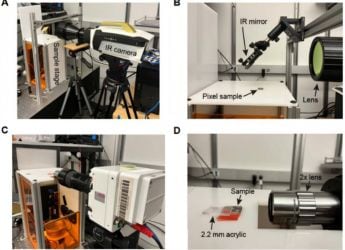- Home
- Science
- Science News
- Swiss Researchers Develop Technique That Can Produce High Resolution 3D Images of Cells
Swiss Researchers Develop Technique That Can Produce High-Resolution 3D Images of Cells
The researchers are calling the new method scanning ion conductance microscopy.

Photo Credit: Pixabay/ Colin00b
The researchers say the new method can prove very useful for studying infection biology
The microscopic world of cells is incredibly important but tricky to understand in detail. Studying living cells at the nanoscale helps us understand the causes of disease but traditional approaches are filled with risks of damaging these cells themselves. Researchers at the Swiss Federal Institute of Technology (EPFL) have developed a new technique that allows scientists to build high-definition 3D images of cells inside and out. This, the researchers hope, will offer insights into how the cells interact within themselves and resultantly help scientists find solutions to fight infections and diseases.
Though many microscope imaging techniques are available, they have their pros and cons. For instance, electron microscopy can't be used on living cells because the intensity of the electron beam destroys the sample. Other methods, like fluorescence microscopy, have issues with giving the right resolution of images.
For their study, the EPFL researchers developed their own imaging technique. Their technique is based on the existing scanning probe microscopy, which is invasive to the cells. So, the researchers relied on the latest advances in nanopositioning, nanopore fabrication, microelectronics, and controls engineering to measure the flow of ions without needing to touch the sample.
Swiss researchers are calling the new method scanning ion conductance microscopy (SICM). The new technique studies the specimen from a distance of 25-50 nm. Since it never touches the specimen there is no damage caused to the sample. The researchers have combined the SICM method with stochastic optical fluctuation imaging (SOFI). The SOFI technique can look inside cells and watch the molecules and processes going on there. The two techniques together have allowed the researchers to take high-definition 3D images of the interior and exterior of cells simultaneously.
The research was published in two studies in the journals ACS Nano and Nature Communications.
The researchers say the new method can prove very useful for studying infection biology, immunology and neurobiology. It can also be used in the field of energy science to help in the production of solar fuels.
Get your daily dose of tech news, reviews, and insights, in under 80 characters on Gadgets 360 Turbo. Connect with fellow tech lovers on our Forum. Follow us on X, Facebook, WhatsApp, Threads and Google News for instant updates. Catch all the action on our YouTube channel.
- Samsung Galaxy Unpacked 2025
- ChatGPT
- Redmi Note 14 Pro+
- iPhone 16
- Apple Vision Pro
- Oneplus 12
- OnePlus Nord CE 3 Lite 5G
- iPhone 13
- Xiaomi 14 Pro
- Oppo Find N3
- Tecno Spark Go (2023)
- Realme V30
- Best Phones Under 25000
- Samsung Galaxy S24 Series
- Cryptocurrency
- iQoo 12
- Samsung Galaxy S24 Ultra
- Giottus
- Samsung Galaxy Z Flip 5
- Apple 'Scary Fast'
- Housefull 5
- GoPro Hero 12 Black Review
- Invincible Season 2
- JioGlass
- HD Ready TV
- Laptop Under 50000
- Smartwatch Under 10000
- Latest Mobile Phones
- Compare Phones
- Jolla Phone
- Realme P4x 5G
- OnePlus Ace 6T
- Nubia Flip 3
- Nubia Fold
- OPPO A6x 5G
- Samsung Galaxy Z TriFold
- Poco F8 Ultra
- Asus ProArt P16
- MacBook Pro 14-inch (M5, 2025)
- OnePlus Pad Go 2
- Poco Pad M1
- Just Corseca Skywatch Pro
- Honor Watch X5
- Acerpure Nitro Z Series 100-inch QLED TV
- Samsung 43 Inch LED Ultra HD (4K) Smart TV (UA43UE81AFULXL)
- Asus ROG Ally
- Nintendo Switch Lite
- Haier 1.6 Ton 5 Star Inverter Split AC (HSU19G-MZAID5BN-INV)
- Haier 1.6 Ton 5 Star Inverter Split AC (HSU19G-MZAIM5BN-INV)












